Welcome to the tiny Amazon town of Misahualli, Ecuador.
Nestled in the Oriente region in eastern Ecuador, the tiny town of Misahaulli (pronounced miss-a-WHY-eee) sits between two major rivers, the Rio Napo and the Rio Misahualli, amidst a lush green landscape. Although it’s a sleepy place nowadays, Misahualli was once a bustling port for travellers and tourists arriving by boat from Coca – a transit route which eventually dried up after the construction of a new road.
But why was this tiny town so popular? It’s because Misahualli is also right on the edge of the Amazon jungle – otherwise known as the biggest rainforest on the planet.
For backpackers travelling through South America, spending some time exploring the Amazon is usually high on the list. This stunning rainforest stretches across nine countries and while there are dozens of points of entry, the most obvious destinations are Manaus in Brazil, Rurrenabaque in Bolivia and Iquitos in Peru (the world’s largest city which is totally unreachable by road!)
But for budget travellers who are keen to see a quieter, less frenzied and ultimately less touristic side to the Amazon, I’d suggest paying a visit to Misahualli, Ecuador.
The day before arriving in Misahualli, we’d taken a four hour bus ride from Baños (cost: $6) through stunning mountain landscapes to Tena, the province’s capital city. We’d planned to spend a few nights at the Hostal Pakay in Tena while we did our Amazon jungle research, but that evening we were approached by a local guide named Juan who explained his tours to us – and we were immediately sold, agreeing to meet him in Misahualli the following afternoon.
I knew the Amazon was going to be a different style of travel. But it didn’t properly dawn on me until we discovered a huge tarantula scuttling around our dorm room at Hostal Pakay – and had to call for the owner who chased it between the mosquito-netted beds in his underwear, wielding a machete.
Exploring the Amazon is not your everyday travelling experience. It’s literally a jungle out there.
So what exactly is there to do in Misahualli?
In this part of the world you can spot wild animals, trek through humid jungle, gaze up at thousand-year-old trees, splash around in river water, and (best of all in my opinion) spend time with the locals who call the Ecuadorian Amazon their home.
Humans and animals alike.
In this article, I’ve written about thirteen of the best things to do in Misahualli, Ecuador. My best suggestion would be to bear all these activities in mind when you’re planning an Amazon tour, and make sure you ask tour operators if these activities are included in their tour packages.
1. Meet the Misahualli monkeys (from a distance)
Misahualli is an hour’s bus ride from Tena (cost: $1). Once we arrived in the town square, we had a few hours to waste before meeting Juan and heading into the jungle so decided to explore the town – and first up was meeting the local monkeys.
Aside from its proximity to the Amazon, Misahualli is probably most famous for the troop of Capuchin monkeys who casually terrorise the town’s main plaza. These guys swing from overhanging branches, chill on rooftops, clamber across the surfaces of parked cars and buses – and their constantly curious nature means plenty of thievery.
If you ask a local Misahualli resident about the monkeys, they’ll smile ruefully and shake their heads. Every day the town square echoes with shrieks from tourists as sunglasses and phones and water bottles are swiftly snatched by little clawed hands, only to disappear into the trees.
It’s hilarious to watch, but a little less amusing when it happens to you. While I was taking photos they grabbed a bag of crisps from the side pocket of my bag and started munching away before I could even blink. Securely stow away all your possessions, and never trust a monkey.
NB: It’s not advised to tease the monkeys, and don’t try to feed them either. They may look adorable but monkeys can turn aggressive easily, and will bite or scratch if you get too close or annoy them.
2. Visit the butterfly house in Misahualli
Just on the edge of Misahualli village and next door to the local school is the mariposario, or butterfly house. The owner, a local man named Pepe, built an enclosure in his back garden because he loves butterflies and wanted to ensure that the hundreds of species native to this part of Ecuador continue to thrive.
For a $2 entrance fee, Pepe showed us around his butterfly house, explaining how he collects butterfly eggs from his visits into the jungle, then cares for the caterpillars and pupae before finally releasing them into the enclosure.
There are little habitats showing the different stages of a butterfly’s life, and a range of different pupae/chrysalises – including some stunning gold-like chrysalises, which apparently help to ward off predators: reflecting sunlight gives the impression of a water droplet instead of a chrysalis).
(This fascinating video shows how a common crow caterpillar transforms into a golden chrysalis. Not for the squeamish!)
Pepe also collects all manner of different insect species from Misahualli plaza to prevent them from being eaten by the monkeys. They get stunned by the bright electric lights, allowing him to grab them and transport them home!
As we wandered through the enclosure, it was clear that Pepe was passionate about butterflies. He’s set up little feeding stations and planted all manner of flowers for the butterflies to drink nectar from, and everywhere I looked there were fluttering wings and flashes of shimmering colour.
3. Sail down the Rio Napo in a canoe
Once we’d met up with Juan and picked up some supplies for our stay in the jungle, he drove us in his jeep to the river’s edge. There we boarded a motorised canoe and set off into the Amazon.
Sailing down the river in a canoe is a wonderfully gentle way to experience life on the water. Despite being motorised, the boat is quiet enough to let you notice the sounds of the jungle around you: clicking insects, birds calling, the occasional splash of the waves against the canoe’s hull.
But be forewarned – while river-borne, your shoes may be stored in amongst a basket of green bananas, freshly harvested yuca and some giant orange cacao pods.
4. Go tubing and swimming in the Napo river
Tena is world-famous for its whitewater rafting opportunities – The World Rafting Championships were even held here in 2005 – and there’s lots of opportunities to go kayaking too.
Unfortunately we didn’t manage to sample either of these adventurous water sports, but we did spend a somewhat rainy afternoon tubing on the river, which was more enjoyable than the glum faces below would have you believe!
Alternatively, swimming in the river is just as enjoyable: the temperatures in the Amazon are humid and sticky, so it’s a relief to wash off in the cool water.
It’s particularly lovely at sunset – just watch out for the piranhas (which we didn’t see) and the water snakes (which we did. Cue plenty of screaming..!)
5. Explore the Amazon jungle on foot
Most people visit Misahualli or the neighbouring city of Tena because of their close proximity to the Amazon rainforest, and there are plenty of companies offering guided Amazon tours in both places. In fact, tour costs are kept relatively low here because of all the competition, making it a good choice if you’re on a budget.
On our wanders through the jungle with Juan as our guide, we began to understand what makes the Amazon so special. Pushing our way through dense jungle vegetation, dodging the creeping vines and taking care not to trip over exposed roots twisting along the ground, I felt like I was in a completely different world.
And then, out of nowhere, we would crest a hill and suddenly see the Napo river through an opening in the trees.
We were quickly sucked back into the jungle again, soaking up the green, until Juan stopped us.
“There, look!” He pointed up into the canopy, and we realised that the tangled roots we stood beside actually belonged to a giant tree purported to be a thousand years old.
6. Learn about medicinal jungle plants
The Amazon is filled with medicinal plants which many Ecuadorians swear by – and Juan was no exception. Throughout our walk he picked herbs, flowers and jungle leaves, explaining their significance to us before depositing them in his backpack.
When we passed a tree covered in hatch marks from a machete, Juan explained that this was the cruz caspi, a tree whose bark is stewed up and the resulting liquid drunk by local people to help them conceive.
Later, Juan heard one of our friends coughing and immediately stopped so he could give her some medicine. Deftly folding up a large leaf, Juan mixed together a thin paste of San Juanito tree bark and water, then poured the concoction up the nose of its cautious recipient. She coughed and spluttered but he said it would clear her cold right up!
Read more: my surreal experience of taking part in an ayahuasca ceremony
7. Experiment with natural jungle face paint
You’ll often see images of indigenous tribes in the Amazon with bright red and orange designs on their face – but where does their face paint actually come from?
Juan showed us a handful of spiny red seeds. “This is our natural paint,” he told us, squeezing open the seed’s casing between his fingers to reveal a cluster of red powdery pods inside. These are seeds from the native achiote tree, also known as annatto, and they’re used for a multitude of purposes: hair dye, lipstick, even food colouring (it doesn’t add any flavour, but it gives a reddish hue).
Using a wooden stick to mix the seed pod’s contents, Juan began to draw delicate designs on my outstretched hand – and soon we were smudging our fingers into numerous achiote seeds and painting our faces.
8. Visit the AmaZOOnico Animal Rescue Center
Upriver is the AmaZOOnico Animal Rescue Center, an animal sanctuary run predominantly by volunteers. They follow a program of rescue, rehabilitation and release, with a goal to help every animal that comes through their doors to go back into the wild, and staff on duty during our visit assured us that all the animals had been rescued from previous owners who’d mistreated them.
Unfortunately, I’ve been to enough zoos on my travels and seen enough animals looking unhappy in their cages to find it unpleasant visiting a place like this. I didn’t know beforehand that we’d be visiting the Rescue Center, or I would have refused to go.
I’ve since researched the center online and sources maintain that the ethos is to rehabilitate all animals, but it’s still sad to see them behind bars – so if you don’t feel comfortable seeing animals in cages then I’d avoid visiting.
Read more: Ethical mistakes I’ve made while travelling
9. Pick yourselves some pineapples
As you might expect, Ecuador’s Amazon is a fertile and lucrative place. But the most surprising thing I saw growing here was pineapple. Mainly because I had absolutely no idea that this fruit grows on a bush.
Over 116,000 tons of pineapple are grown in Ecuador each year, with plenty coming from the Amazon. We paid a visit to Juan’s neighbour, an elderly farmer called Don Jaime who runs a pineapple plantation and was even kind enough to give us a few pineapples for breakfast the next day.
10. Help to harvest the yuca plant
Yuca (or cassava) is an extremely common food in South America and is a staple of many Ecuadorian dishes: chopped up and added to soups, served as an alternative to potato, or ground up into flour and baked into things like pan de yuca, a deliciously dense little cheesy bun which I ate in abundance while living in Cuenca, Ecuador.
Juan took us to visit his family home, where we met his mother harvesting a crop of yuca. Although the guided tours bring in the bulk of their income, Juan’s family still farms plenty of different produce including yuca, mango, banana, cacao and plantain. They harvest at different points throughout the year and sell straight to the consumer at local markets.
Read more: Modern life in the Ecuador Amazon jungle
11. Learn how to cook chocolate with fresh cacao
Ecuador is one of the world’s top ten producers of cacao, and many Amazon tours will offer a visit to a cacao farm.
Under a canopy at their wooden stilted house, Juan’s mother showed us how to make chocolate from roasted cacao beans. The first step was to grind them into a fine powder using a hand grinder, then she set them in a metal pan on top of the fire and added water.
We took turns stirring the mixture as it gradually took on a thick and silky consistency – and once she deemed it to be ready, we dipped chunks of fresh banana into the hot chocolate.
I half expected it to be bitter and strong, but it was delicious!
12. Have a sleepover in the jungle
Many Amazon jungle tours are offered just in the daylight hours, but it’s also possible to spend the night in an eco-lodge. Juan’s place was close to the riverbank in a little clearing surrounded by tall trees.
After you’ve spent the day exploring the jungle, your activities become wonderfully restricted.
We shunned the idea of internet access in favour of playing cards, lazing in hammocks, staring up at the stars and gossiping in our little dorm room while the insects chirped outside.
13. Go on a night walk in the Amazon jungle
Of course, being in the middle of the jungle late at night is an opportunity you shouldn’t pass up. Once it was properly dark outside, Juan gathered us together, told us to don our head torches, and we set out into the night.
The nocturnal side of the Amazon is fascinating. Animals which hide away from predators during the day are suddenly out and about: copulating grasshoppers, steadily crawling caterpillars, giant moths, very nimble spiders, and teeny tiny frogs.
Because it’s so hard to see, our ears became much more attuned to the sounds of the rainforest. All around us there was a cacophony of nocturnal noise: the constant buzzing of cicadas, the clicks and croaks of tree frogs, the chirping of geckos, and a whole host of other sounds, most likely mating calls, courtship rituals and attempts to mark out territory.
Juan led us through the deep darkness towards the places he knew various creatures were hiding. He spotted a morpho butterfly and carefully picked it up to show us – just one of the beautiful and unexpected sights amongst the pitch black of this other, haunting world.
What do you need for a visit to Misahualli?
To prepare for a trip to the Amazon rainforest, you should think about packing loose, thin clothing for the humidity – but to protect against mosquitos and spiky or itchy vegetation you’ll also need long sleeved tops and long trousers.
The Amazon’s weather is prone to frequent tropical rains, warranting the use of waterproofs – but that humidity means you’ll sweat. A LOT. Bring a complete spare set of dry clothes to change into after a day of exploring.
If you’re already travelling with hiking boots then bring them, but don’t worry if not as most tour operators will lend you a pair of rainboots. Just make sure they fit properly by walking a few hundred metres in them first!
Here’s a good Amazon packing checklist to follow:
- head torch or electric torch
- sunhat
- mosquito repellent
- clothes which cover your legs and arms
- spare dry clothes
- swimwear
- waterproof raingear, usually a jacket or poncho and trousers (although you may not wear the latter due to the heat!)
- flipflops/sandals for the evenings
- waterproof liner/drybag for your bag (in a pinch just use a rubbish bag)
– Tena to Misahualli: catch a bus from the Junmandy bus station in Tena – it takes an hour and costs $1.
– Quito to Misahualli: take a five hour bus to Tena (costs $6) and then take the one hour bus from Tena.
– Baños to Misahualli: take a four hour bus to Tena (cost $6) and take the one hour bus from Tena.

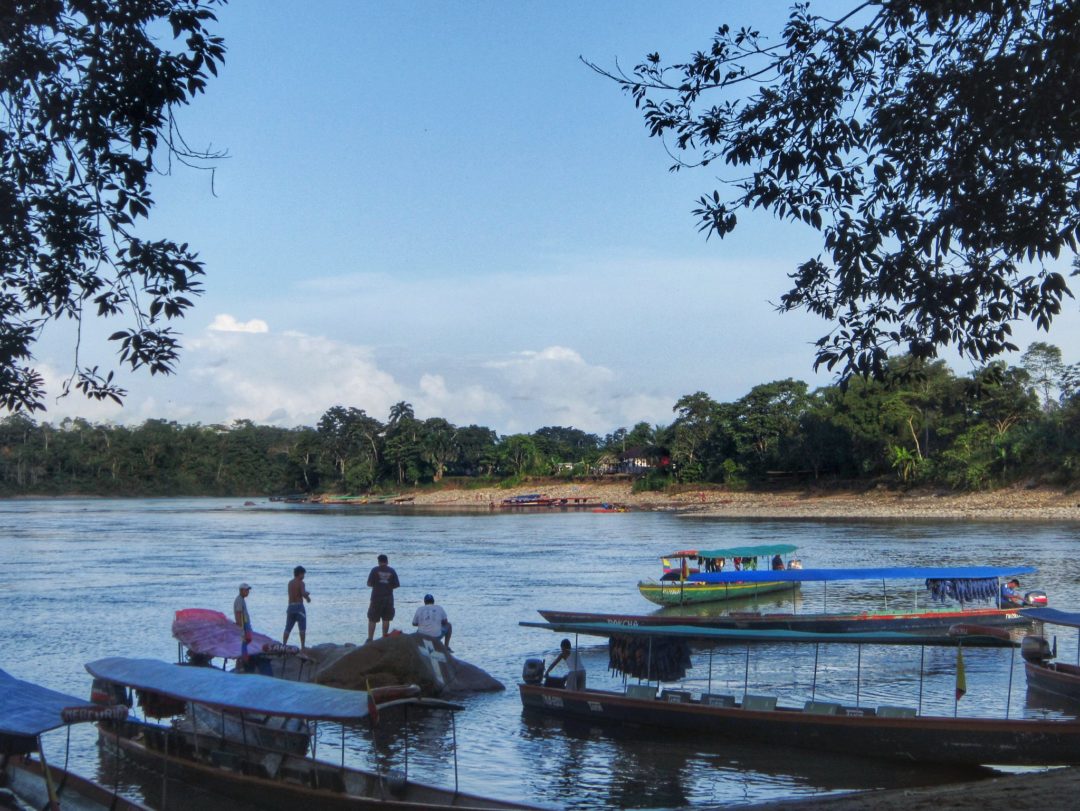
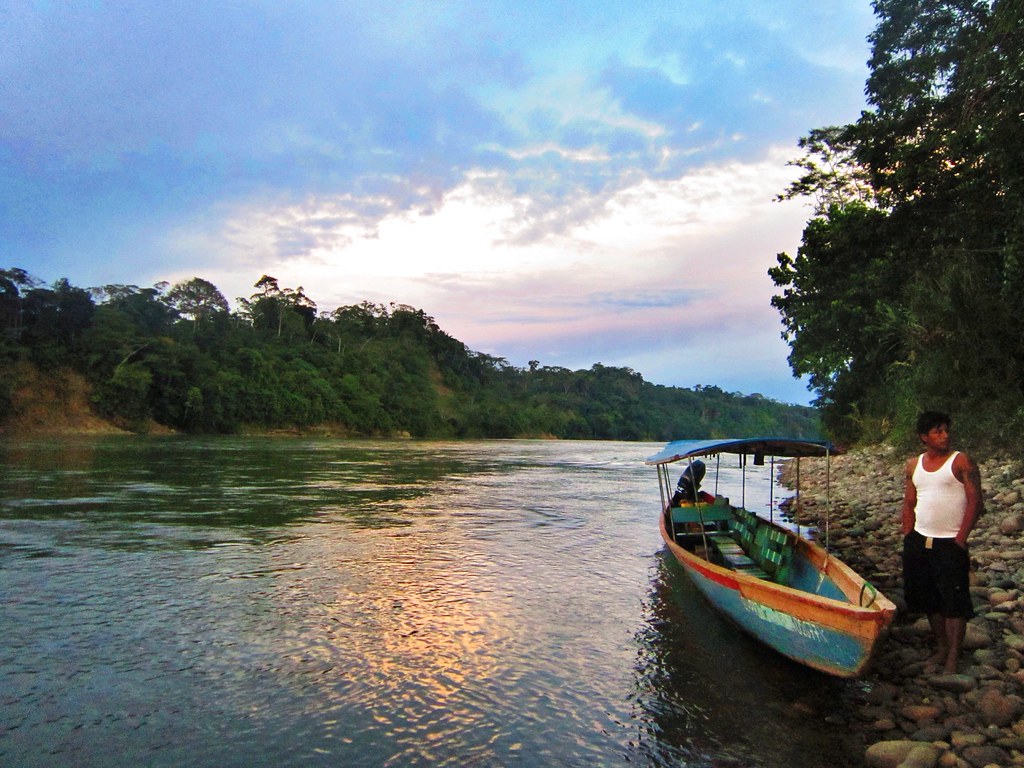













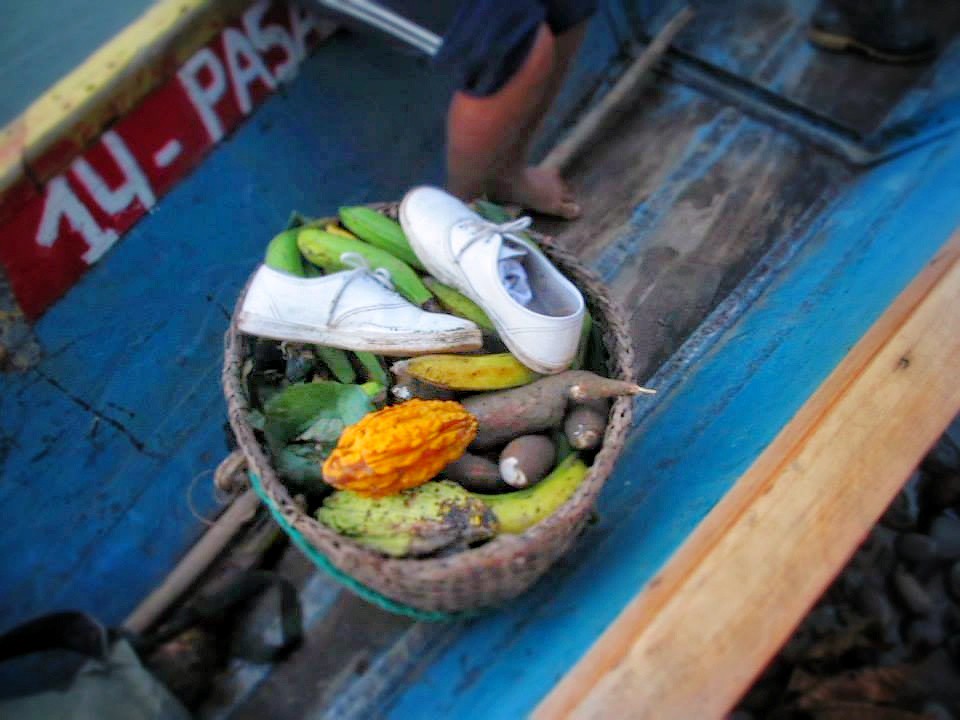
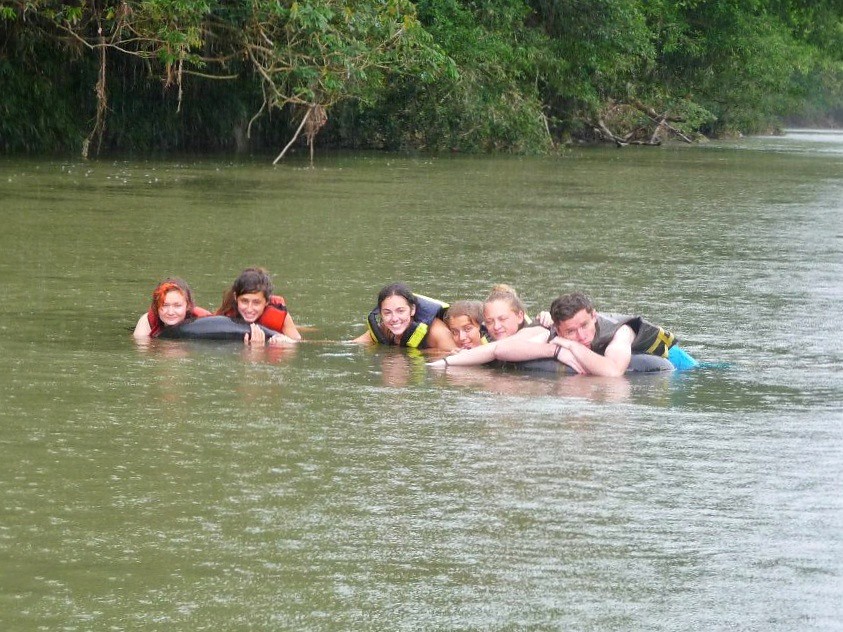







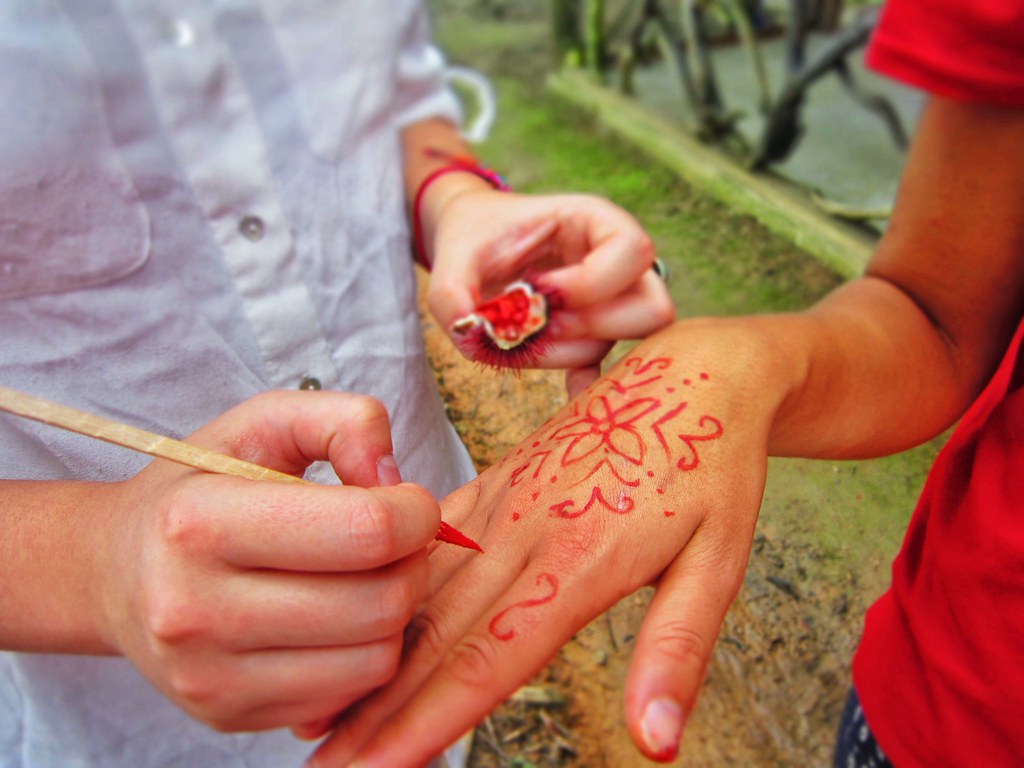
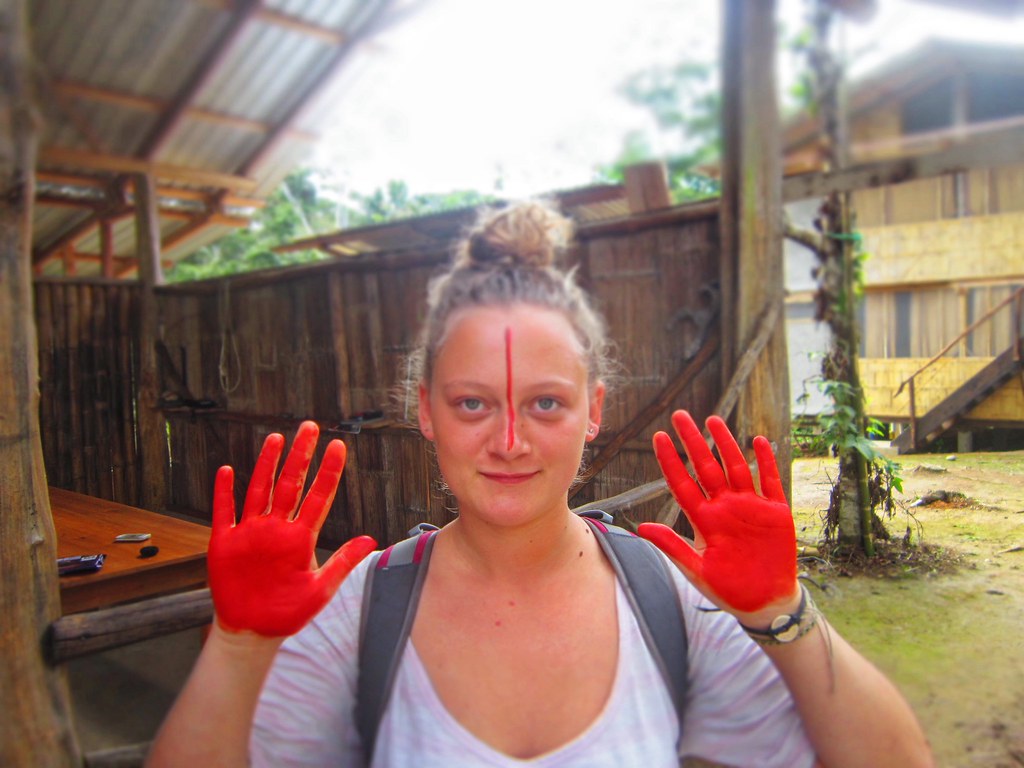






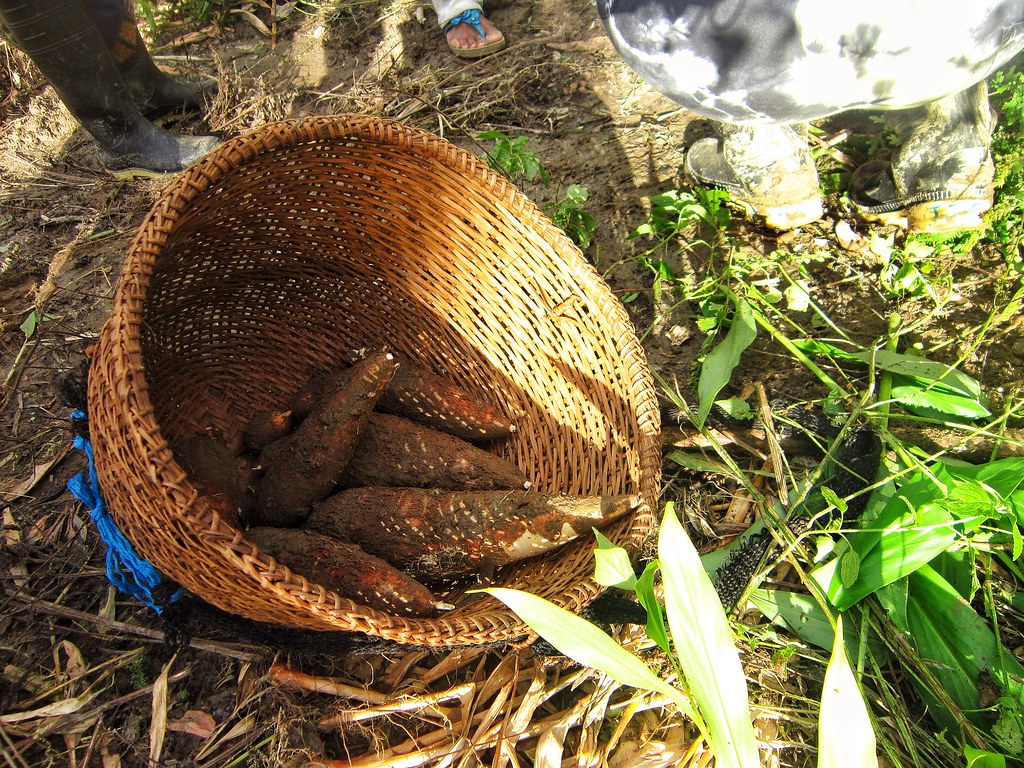
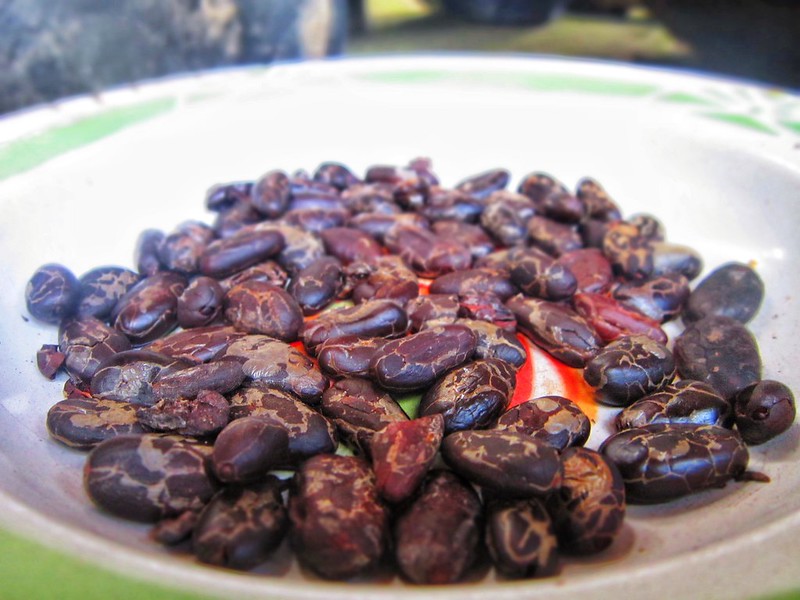

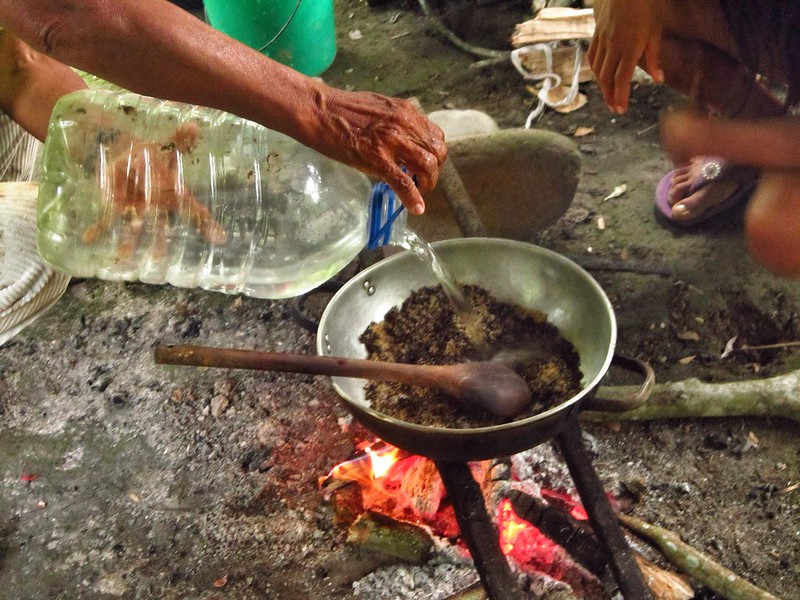

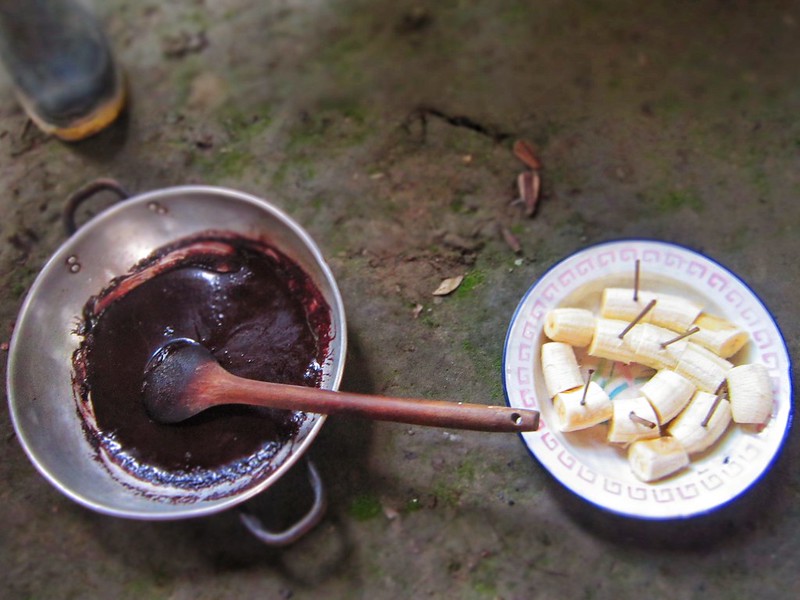



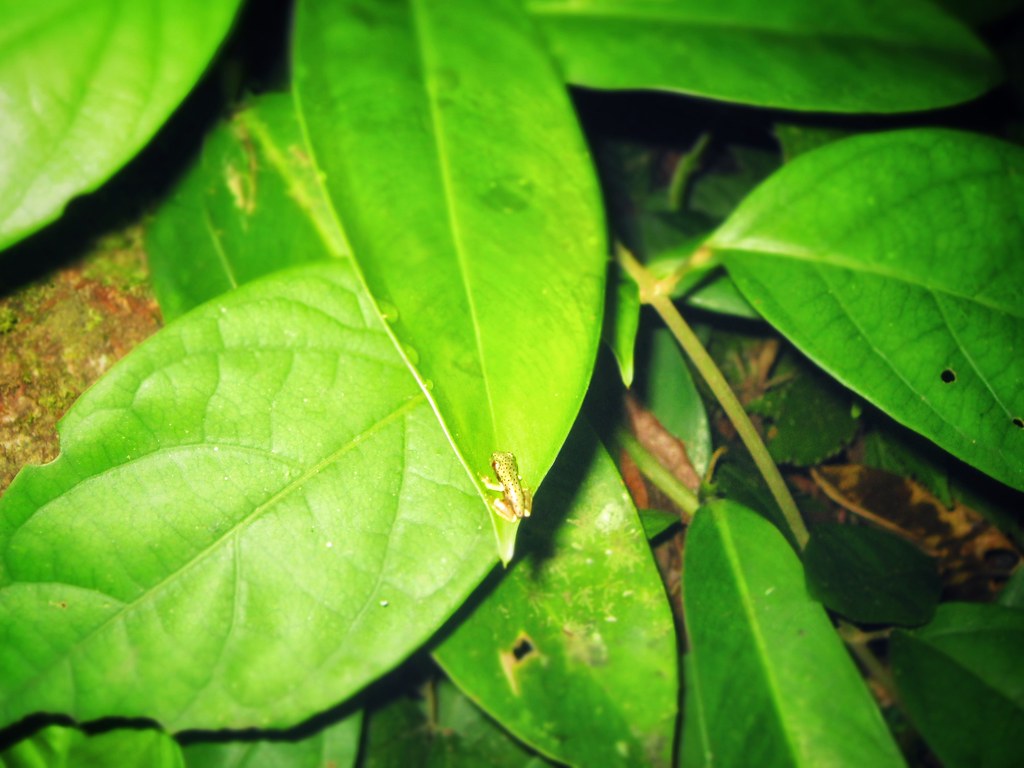



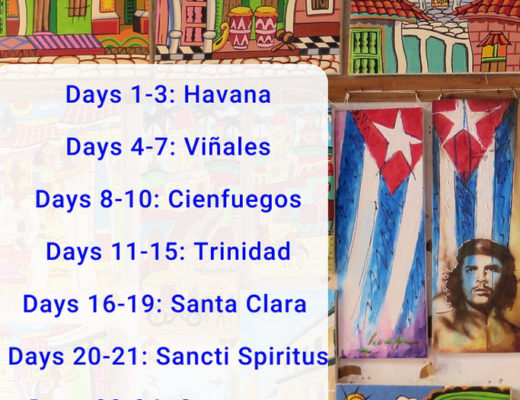
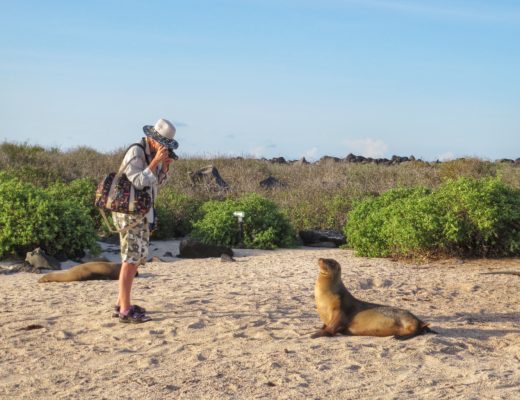
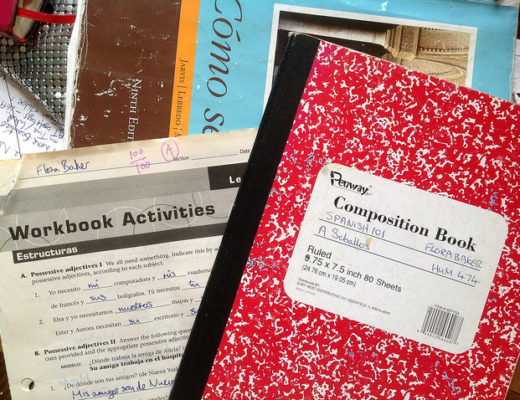
11 Comments
Courtney
May 2, 2019 at 3:14 pmHi, Flora! Lovely write-up. I volunteered in Riobamba, Ecuador last summer with WorldTeach and some of the other volunteers were located in Tena. I spent just a half-day at Misahualli and loved seeing the monkeys and exploring the nearby jungle. Unfortunately, my friend and I were taken advantage of by one of the men who ferries the boat across the river and had to leave a bit earlier than we wanted, but it is a fascinating town to visit! I also read your other post on the town of Salinas and loved it. You captured the town so well! In Riobamba I lived with 3 Ecuadorian priests who often went to Salinas to meet with their priest friends and shop for cheese and chocolate. They took us for a one-day visit and it was a special day.
Flora
May 3, 2019 at 10:07 amOh that’s such a shame about the ferryman! I’m glad you managed to see a bit of Misahualli though – it’s such an interesting little town 🙂 And how fantastic that you were able to visit Salinas de Guaranda with a crew of Ecuadorian priests! I know the ‘original’ priest still spends time in Salinas and I half-hoped we’d bump into him, but alas it never happened…
aterosin
May 2, 2019 at 4:28 pmI’m in my sixties now, but went to this place on our third trip to EC back in 2015. We loved this town and did a canoe trip too. Families swimming in the river. There was a beauty pageant, of all things, right on the river bank with the monkeys swinging overhead. We’ve stayed in Banos several times. There are several nice hostels there too. Did you go up the volcano and find the Swing at the End of the World? Awesome! Gerry In Oregon
Flora
May 3, 2019 at 10:43 amWow, that beauty pageant must have been amazing! 😀 Unfortunately I didn’t make it to the famous swing – it hadn’t become such an Instagram-worthy location when I was in Ecuador in 2013 so people didn’t talk about it as much. We definitely would have gone if I’d known about it!
aterosin
May 3, 2019 at 2:38 pmWe literally stumbled upon it when we were exploring the mountain. On one little side road, no signs, We found a family that had a restaurant with fish ponds AND were offering zip line rides. My first.
On the way down the mtn we saw a little old man sitting in a lawn chair in the middle of nowhere and asked him what was going on. He motioned to a trail. We parked, followed the trail thru a cow pasture and there it was. The swing. Nothing but a dowel across the gut to hold one in. Got a push from my brother and off I went. What a rush. I think they charge for it now. Probably two Dollars.
Steve Pickard(Sr)
May 4, 2019 at 12:45 amFascinating experience from you and the comments. Enjoyed this read
Ernst
June 8, 2019 at 8:33 amHi Flora. I and my wife Gala are planning to make the trip you described. How do I get in touch with Juan the local guide? Or is it just to be at Hostal Packay and ask any guide?
Thanks in advance.
Ernst.
Flora
June 21, 2019 at 4:55 pmHi Ernst! How lovely that you’re heading to Misahualli soon 🙂 I’m afraid I don’t have specific contact details for Juan but I’m sure the folks at Hostal Pakay will!
Amie Meredith
March 2, 2020 at 9:08 pmHiga flora great write up and sold it to us 🤗 me and my friemd are heading there tomorrow could you tell me how much you paid the trip please
Things To Do In Misahaulli – Ecuador's Tiny Amazon Town - Voyage Love
September 20, 2019 at 1:56 am[…] Source by beyourowntravelguide […]
Ecuadorian Rainforest – suemtravels
December 5, 2024 at 6:29 pm[…] The Tena and Pano Rivers merge in the center of town at a pedestrian bridge and eventually join the Misahualli River which flows into the Napo […]